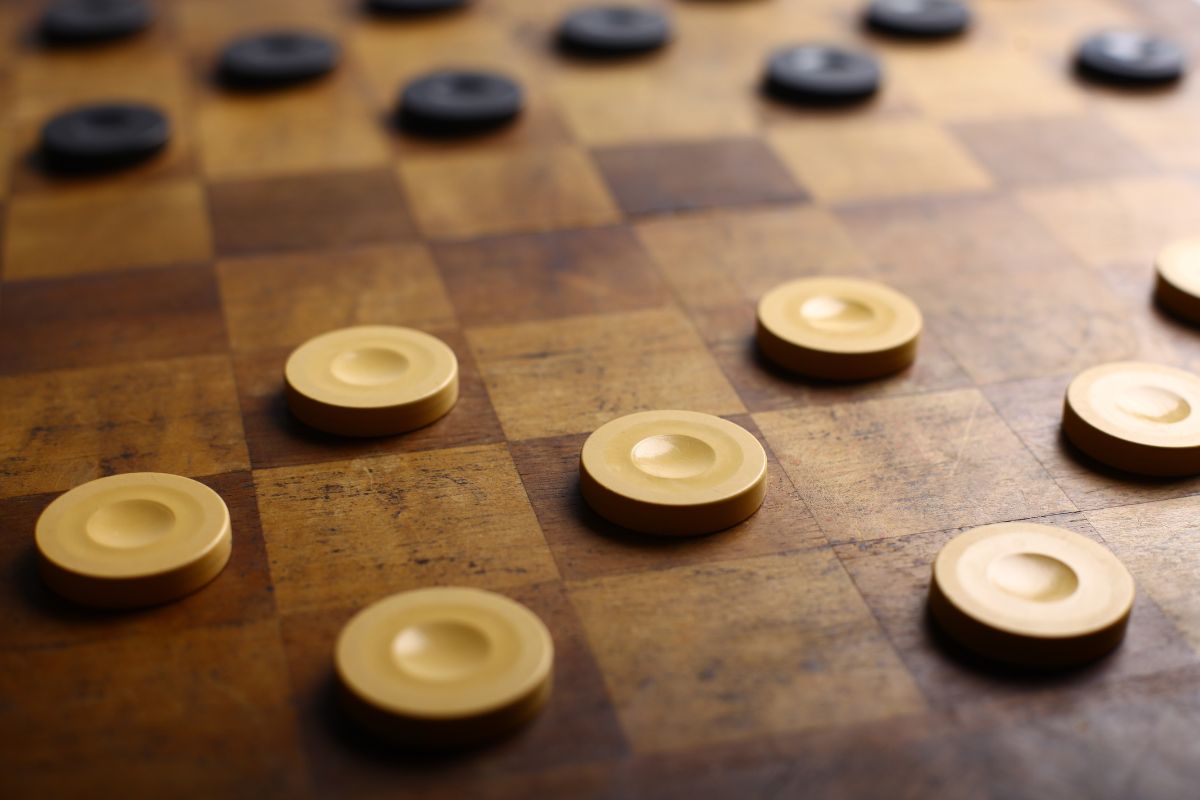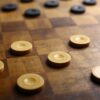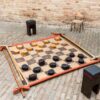Phases of the Checkers Game:
Playing checkers is an exciting and demanding game, with its charm lying in its complexity and strategic challenges. Each checkers match unfolds through three distinct phases that shape the course of the game and the players’ skills. Join us in uncovering the secrets of these phases and gain valuable insights to help you improve your skills.
I. Opening Phase
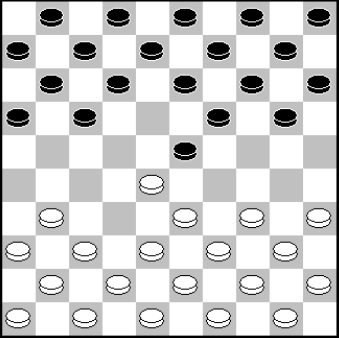
The initial phase of a game is called the opening. The opening comprises approximately the first 15 moves made by both players.
The Multitude of Moves and Tactical Traps
In contrast to, for example, chess, playing the opening in international checkers is not solely about theoretical solutions where deviating from them leads to a worse position. White can start the game in 9 different ways, and black can respond in as many ways. This gives us 81 possibilities for the first move alone. The sheer number of possibilities makes it impossible to theoretically analyze them all. In practice, after just a few moves, you can end up with a position that is not found in any database of played games. This doesn’t necessarily mean it’s a bad move. In the opening, it’s hard to gain a significant advantage unless one of the players falls into an opening trap, some examples of which you’ll find later in this book. The large number of pieces on the board forgives imprecise moves, which is different from the later stages of the game.
There are few books on opening theory, and the ones that exist are several-hundred-page tomes reserved for more experienced checkers players.

How to use your time effectively in this phase of the game?
Every player should have a few favorite openings chosen and studied, which will allow them to play the initial moves quite efficiently. All major checkers tournaments impose time limits on each player for their games, which are measured using special clocks. Exceeding the time limit results in a loss, and since games are rarely decided in the opening, it’s not worth spending more than 10-20% of your allotted time on it, so it’s better to save that time for critical moments.
II. Middle Game

The position after 14 moves of the opening in the game between Damian Reszka and Kevin Machtelinck from the European Team Championship 2021. The game ended in a draw.
Positional and Tactical Play
After transitioning from the opening, the game enters the middle game phase. In this part of the game, the most significant factor is adopting the right long-term plan based on an understanding of strategy, known as positional play. However, more often than not, you can also surprise your opponent with tactics, which we call tactical or combinational play.
Finding the best moves in the middle game requires good theoretical preparation but also creativity in finding moves that your opponent may not expect. In this phase of the game, calculating—effectively foreseeing various possible positions in future moves—becomes much more critical than in the opening.
Choosing Strategy and Creativity in the Middle Game
Tournament practice shows that it is in the middle game that players consume most of their allocated time for the game. The result of a game of international checkers is most often determined between moves 35 and 45, which is in the late middle game. During this phase, you will typically use up 40-60% of your time bank. As you gain experience in tournaments, you will learn to assess which moves can be made more automatically and which ones require deeper analysis of the position.
Inspiring Publications and Grandmaster Analyses
Training for the middle game is easier than preparing for the opening. On the market, you will find numerous publications teaching different plans for the middle game, along with analyses of games played by grandmasters. By breaking down individual moves into their basic elements, you will have an easier time understanding the play of the strongest checkers players. Reviewing games of other players can be a source of inspiration and help you develop your own style.
Everyone is different. We all have different preferences, whether it’s our definition of fast driving, waking up early in the morning, or our ideal room temperature. The same goes for checkers play. From a player’s chosen position, especially in the middle game, you can often discern whether they are aggressive, daring, and willing to take high risks or whether they are patient and calm, avoiding unnecessary recklessness and threats.
III. Endgame
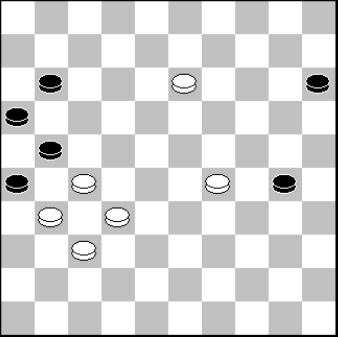
The position after 47 moves in the game Damian Reszka – Oskar Budis from the 2013 Polish Championship. White won.
The game transitions into the endgame phase at around move 40-50, when there are approximately 6-8 pieces left on the checkerboard. It is in this phase that the final outcome of the game is ultimately decided.
The Final Phase of a Game of Checkers – The Endgame
For dozens of moves in the opening and many more in the middlegame, you work hard to secure the best possible position for yourself in the endgame. One mistake or even an inaccuracy can undo all that hard work in an instant. On the other hand, if you haven’t managed to gain an advantage in the earlier phases, the end of the game will provide you with many opportunities.
Decisive Moves in the Endgame – The Value of Calculations
Due to the limited number of pieces and potential kings, in the endgame, you must analyze as many, preferably all, possibilities. Calculation is of the utmost importance here. Therefore, it’s essential to preserve an adequate amount of time that allows for the necessary calculations. It’s a good practice to leave at least 20-30% of the time allotted for the entire game for this phase.
Solid play in endgames requires a vivid imagination and knowledge of diagonals and areas of the checkerboard. In most games that aren’t decided before the final phase, kings often appear. Playing with kings, given their long-range moves and jumps, forces you to employ different tactics and strategies compared to the opening or middlegame.
Knowledge of Endgames – The Key to Success
Endgames are the best and most thoroughly theorized phase of the game. This is reflected in the availability of literature and training materials. In various books, you can find dozens or even hundreds of examples, tips, ideas, and theoretical positions that you simply need to know. Knowing what endgame position to aim for makes it much easier to choose the right plan earlier in the game.
Three Phases of Draughts Gameplay
In summary, a game of checkers can be divided into three key phases: the opening, the middlegame, and the endgame. Each of these phases has its specific characteristics and requires different skills from the players. In the opening, the key is to plan a few basic moves, while in the middlegame, both positional and tactical play are essential. The endgame, on the other hand, is the time for precise calculations and analyzing possible moves. Each of these phases presents its unique challenges, but with the right knowledge and training, we can become better draughts players. So, we encourage you to delve into the intricacies of each of these phases and continue your journey into the fascinating world of draughts.


